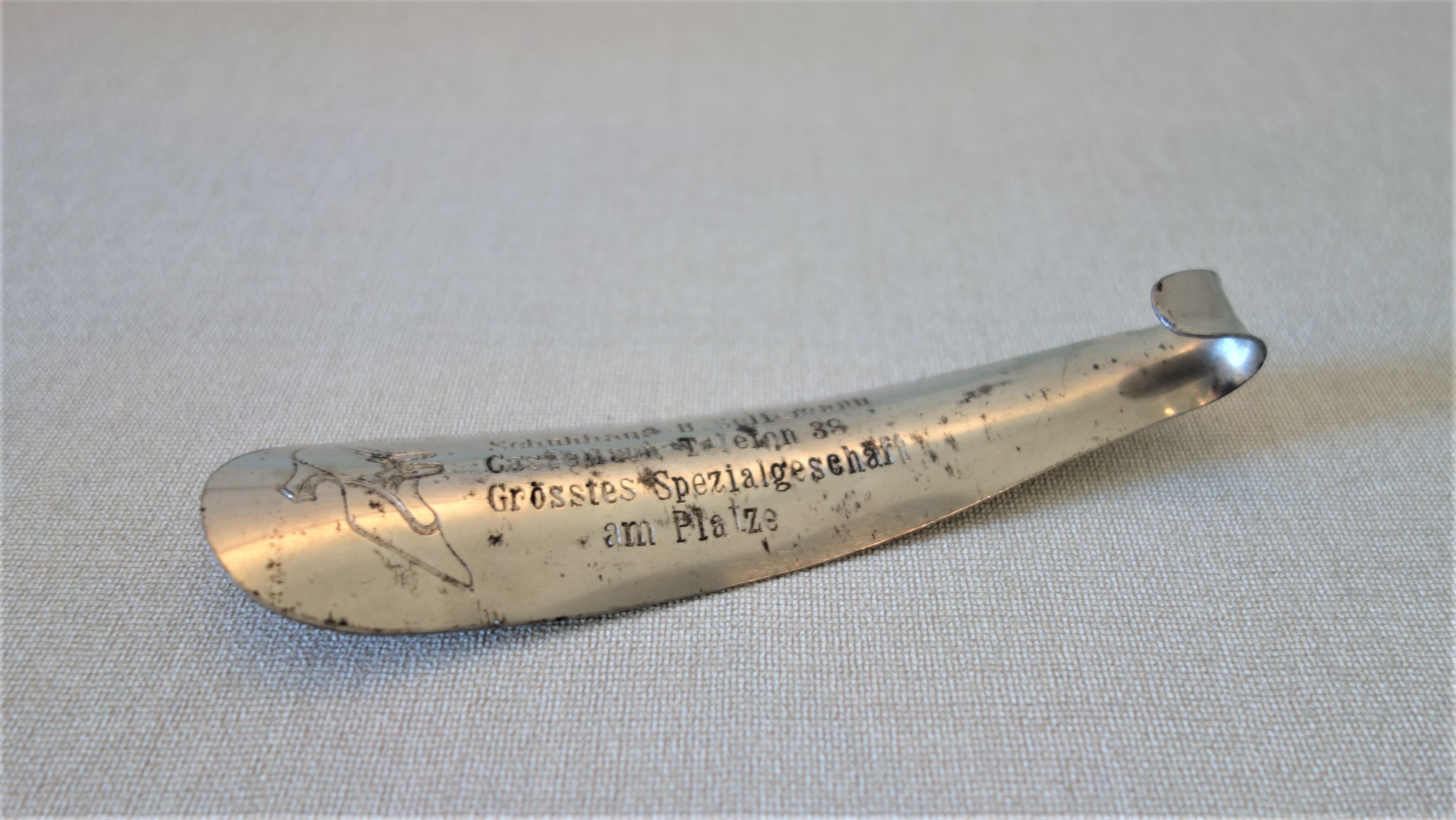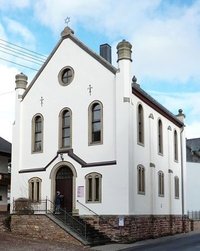This shoehorn is a small, everyday item with the following inscription engraved on its metal surface: „Schuhhaus H. Seligmann / Castellaun Telefon 38 / Grösstes Spezialgeschäft am Platze“ (/ largest on-site specialist shop) . Similar to the imprinted clothes hangers, it was common for businesses to give its customers a shoehorn as a promotional gesture when they purchased a product. It is one of the few items remaining today that bear witness to the destruction inflicted upon Jewish businesses.
Heinrich Seligmann purchased an exposed timber house on the Marktstraße in Kastellaun in 1919, where he opened a shoe retail and repair shop, which grew into one of the largest shoe shops in the Hunsrück region. Once the National Socialist (NS) regime assumed power, however, boycotts were instituted against Jewish businesses, including the “Schuhhaus Seligmann”. This development coupled with increasing competition forced the Seligmanns to abandon their business completely and, as early as in May 1935, they sold their house for just 18,000 Reichmarks, well below its actual market value.
Heinrich Seligmann came from Seibersbach (near Stromberg), while his wife, (first name unknown) née Hirsch, was from Bruttig on the Mosel (river). They initially lived on the Kirchstraße in Kastellaun, where Mrs. Seligmann sold haberdasheries and Mr. Seligmann actively built the shoe business (as previously mentioned), and where they raised a family of five children.
When they first had to leave Kastellaun and their business behind, they moved in with their oldest daughter, Elfriede, and her husband in Vallendar. Friedel’s husband came from a wealthy manufacturing family from Vallendar who, even during the National Socialist period, maintained good contact with other well-known Koblenz families until their lives became unbearable here, as well.. Prior to the “Reichspogromnacht” (Night of broken glass), Friedel and her husband travelled to Luxembourg in an automobile caravan, from where there eventually emigrated to Haifa via Marseilles. Heinrich’s son, Kurt, had already fled to Palestine in 1936, while his son, Hans, survived the war in Brussels and later emigrated to the USA. The youngest daughter, Ruth, travelled to England with a children’s transport, married a man from Poland and emigrated to the USA, as well. Mrs. Seligmann died in Vallendar just prior to the outbreak of the Second World War.
Heinrich Seligmann remained with his daughter, Herta, and her family in Neuwied. Her husband, Otto Loeb, was a member of the „Centralverein Deutscher Staatsbürger Jüdischen Glaubens“ (Principal Association for German Citizens of the Jewish Faith), was a staunch nationalist and was convinced that nothing could happen to them in Germany. Heinrich Seligmann together with Herta and Otto Loeb and their daughter, Ruth, were deported with a transport from Koblenz to the Izbica ghetto in 1942, from where they sent a final message, reporting that they were still „all together“.
de

